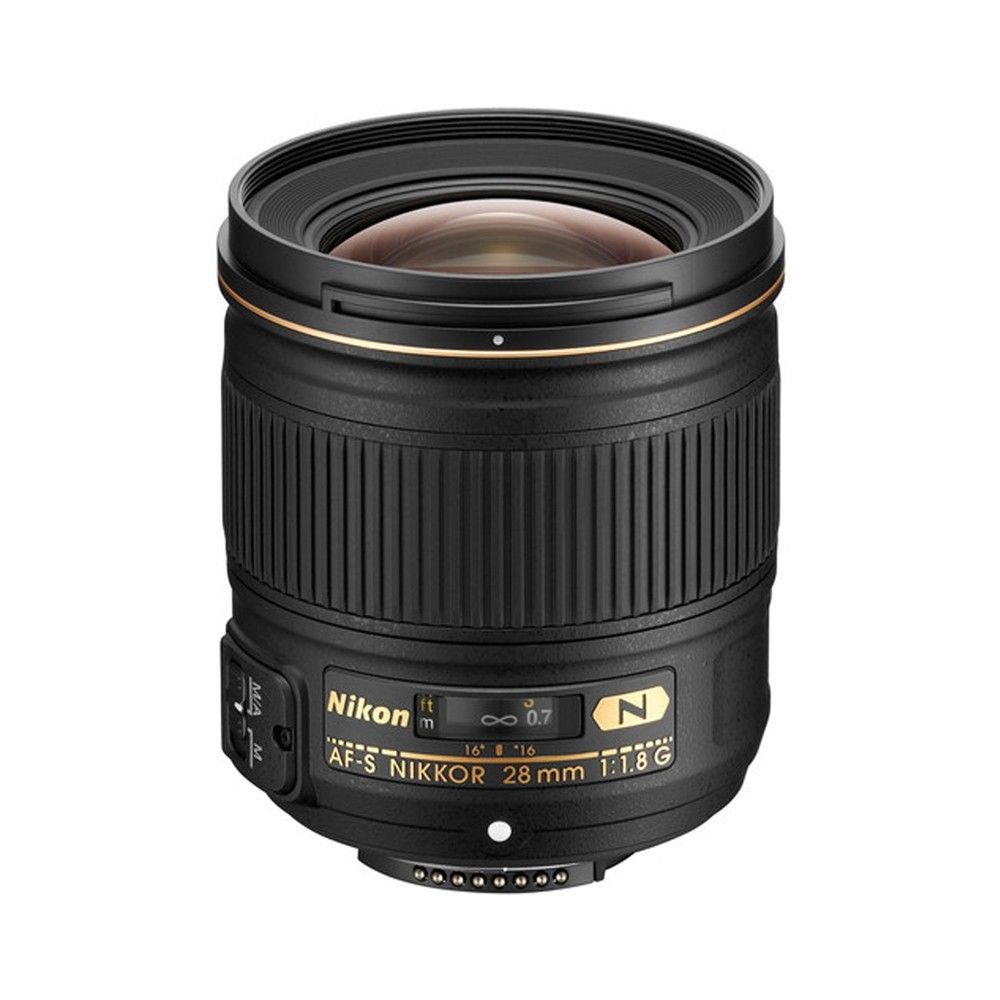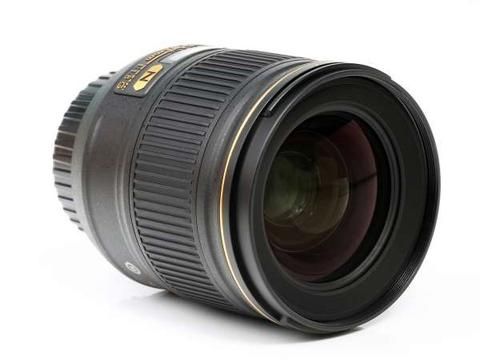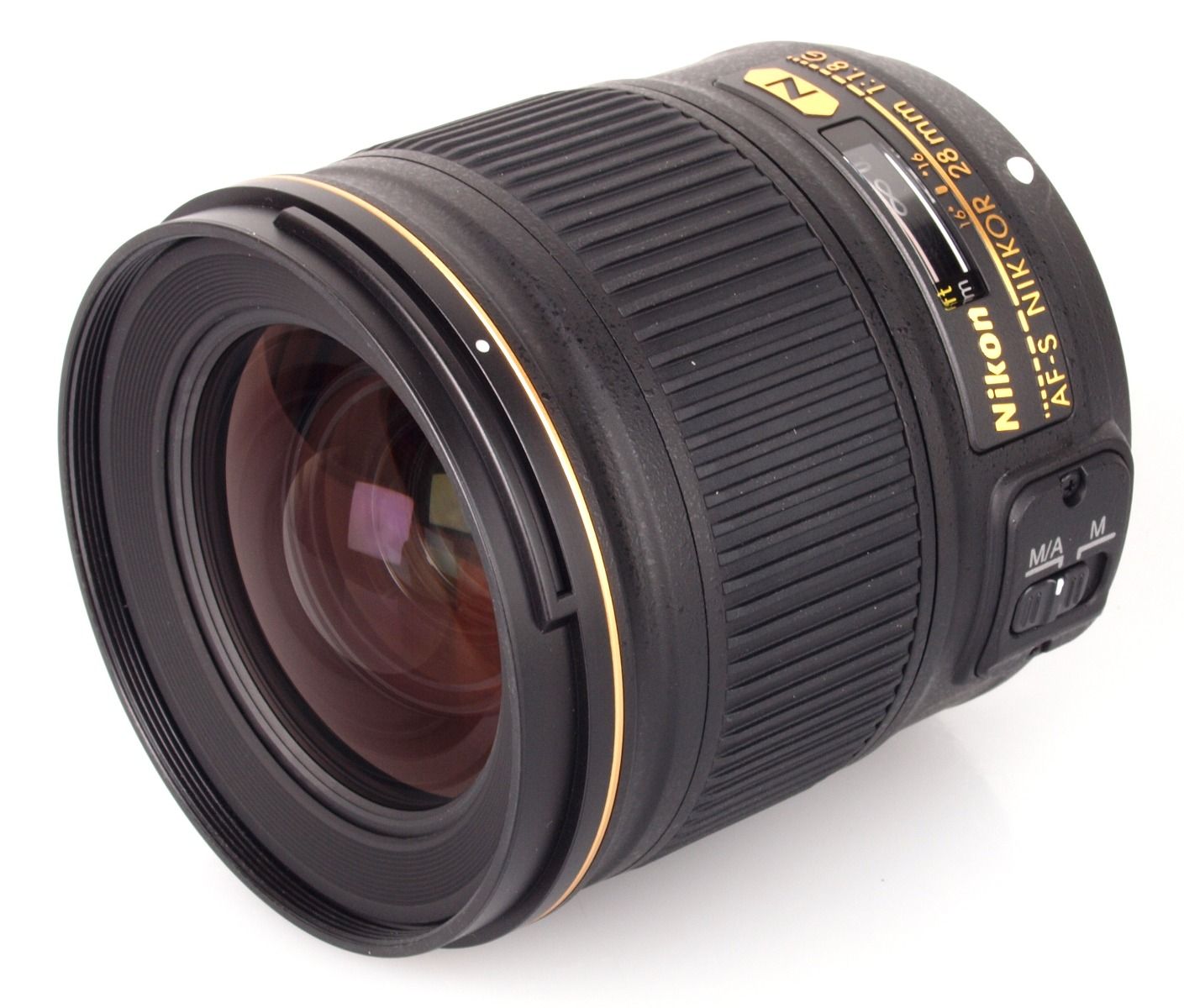Product Description
Nikon 28mm f/1.8 G AF-S Nikkor Wide-Angle Prime Lens: Precision and Performance
The Nikon AF-S NIKKOR 28mm f/1.8 G is a versatile wide-angle prime lens that combines a broad field of view with a compact and lightweight design. Ideal for a range of photographic applications, this lens features a bright f/1.8 maximum aperture that excels in low-light conditions and provides excellent control over depth of field for isolating subjects with beautiful bokeh.
Key Features at a Glance:
- Focal Length: 28mm (42mm equivalent on DX-format cameras)
- Maximum Aperture: f/1.8
- Minimum Aperture: f/16
- Lens Construction: 11 elements in 9 groups, including 2 aspherical elements
- Coatings: Nano Crystal Coat and Super Integrated Coating
- Autofocus System: Silent Wave Motor (SWM)
- Diaphragm: Rounded 7-blade
Superior Optical Performance
The NIKKOR 28mm f/1.8 G lens is designed to deliver sharp, clear images with minimal distortions. It incorporates two aspherical elements that effectively reduce spherical aberrations and distortions, ensuring high sharpness and accurate rendering across the frame. This lens is especially useful for wide-angle photography, offering even illumination and maintaining image quality throughout its field of view.
Advanced Coating Technology
To enhance image quality further, the lens features Nano Crystal Coat and Super Integrated Coating. These advanced coatings reduce flare, ghosting, and internal reflections, providing improved contrast and colour accuracy. These coatings are particularly effective in strong lighting conditions, ensuring consistent performance even in challenging shooting environments.
Fast and Silent Autofocus
Equipped with a Silent Wave Motor (SWM), the lens provides quick, quiet, and precise autofocus performance. This makes it ideal for both still photography and video recording, where noise can be a concern. The lens also offers full-time manual focus override, allowing for easy and precise adjustments when needed. Additionally, the Rear Focusing System ensures that only the rear lens group moves during focusing, maintaining the lens's overall length and promoting faster focusing speeds.
Creative Control with a Bright Aperture
The f/1.8 maximum aperture allows for excellent low-light performance and the ability to achieve a shallow depth of field, making it perfect for selective focus techniques. The rounded 7-blade diaphragm enhances the bokeh quality, providing a pleasing, soft background blur that highlights your subject effectively.
Versatile and Compact Design
Designed for FX-format F-mount cameras, the lens can also be used with DX-format cameras, where it provides an equivalent focal length of 42mm. Its compact and lightweight build makes it a convenient option for various shooting scenarios, including street photography, landscapes, and portraiture.
The Nikon 28mm f/1.8 G AF-S Nikkor lens offers a combination of high optical performance, advanced coatings, and fast autofocus, making it a valuable addition to any photographer’s kit. Its wide-angle perspective and bright aperture provide the versatility needed for both creative and practical shooting situations.
Payment & Security
Your payment information is processed securely. We do not store credit card details nor have access to your credit card information.






















